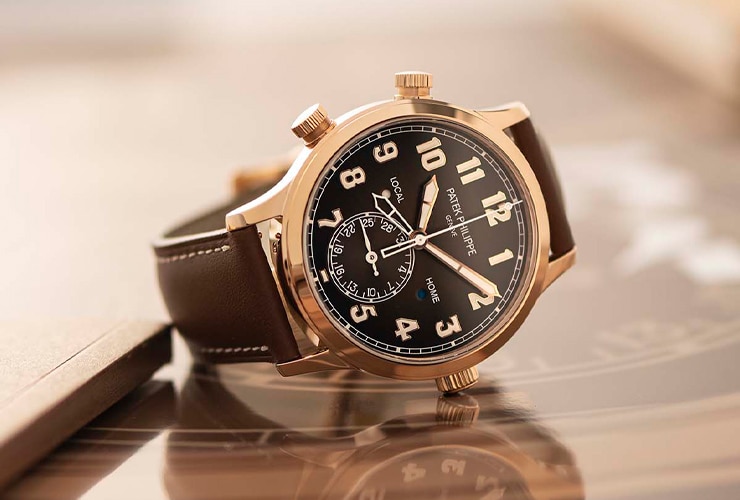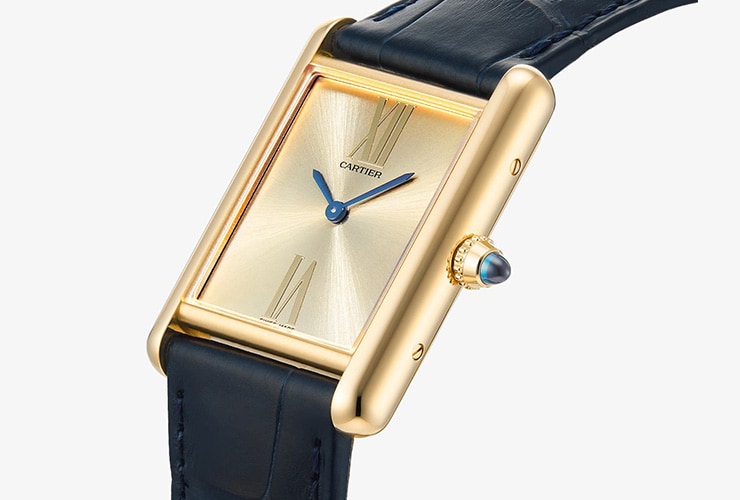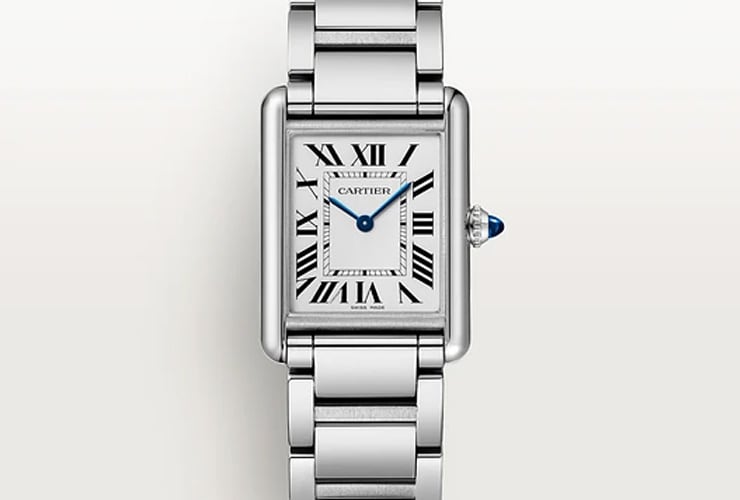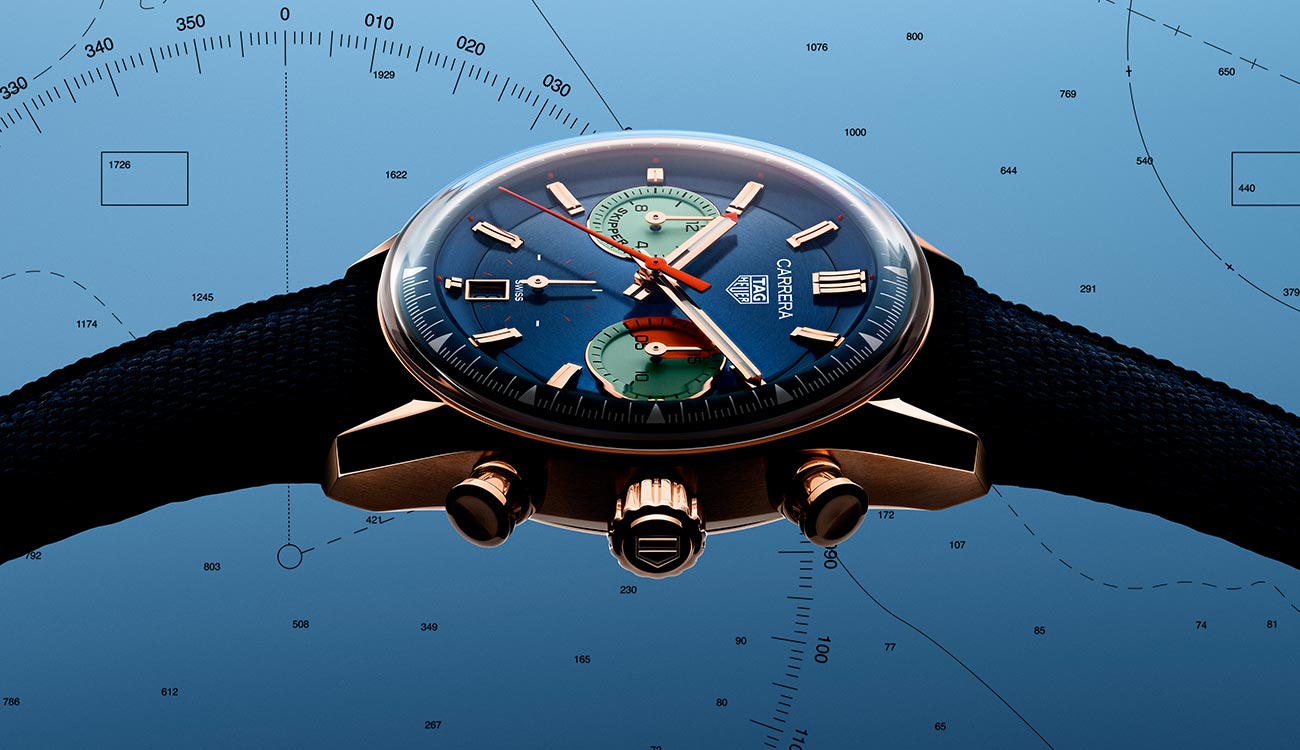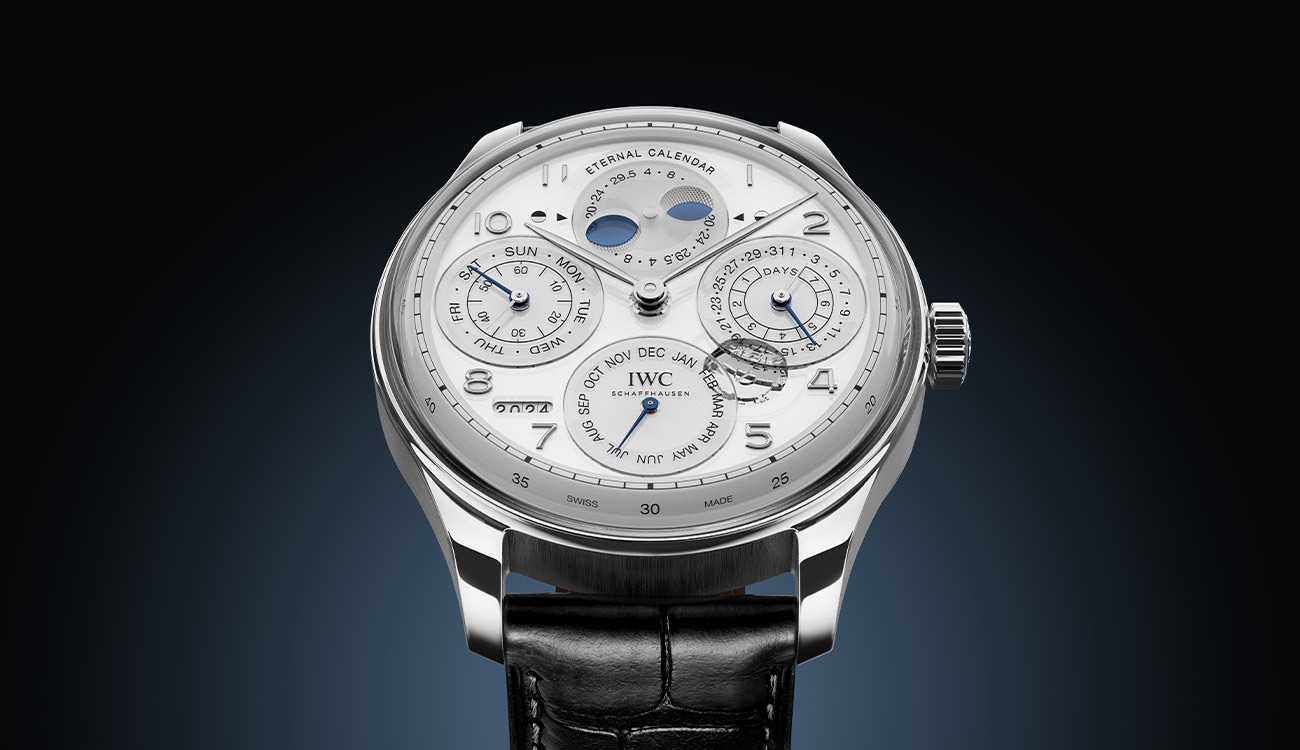What’s Going On In The World of Watches, with Head of Watch Buying Mark Toulson
By Robin Swithinbank | 12 minute read

There’s never been a doubt in my mind that if you want to know what’s going on in watches, as in, what’s really going on, talk to a retailer. Big stories, A-lister launches and multi-million dollar ad campaigns draw the eye, yes, but do they translate into sales? With their view across brands, categories and price brackets, the retailers know.
Mark Toulson is the Watches of Switzerland Group’s head of watch buying, overseeing more than 100 showrooms and several ecommerce websites. Given his decades of experience, few have a more finely attuned understanding of the watch landscape than he does.
Following some recent research commissioned by the group, we talked with Mark about the current trends he’s observing and the data behind them. Are consumers buying bigger watches than they were? Are waiting lists really as long as people say they are? And are green dials as all-conquering as social media might have us believe? Mark kindly shared his insights with us.
Robin Swithinbank \(RS\): Mark, the last 18 months must have been a challenging time to be a watch buyer – how do you buy a watch over Zoom?
Mark Toulson \(MT\): Well, it’s much harder than in person! We’re getting back into the office now, but we’re still really missing seeing watches in the flesh rather than on a screen while travel is so difficult. Often, we’re only seeing watches for the first time when they arrive in the warehouse. That can cause some surprises!
RS: You must miss the annual Basel and Geneva watch fairs?
MT: Yes, hugely. The immediacy of a fair, seeing people and product, is so important. Watches are emotional, and just like our customers, we want that tactile sensation of putting a watch on your wrist to help us make our judgements.
RS: How has the pandemic affected WOSG’s sales?
MT: Obviously, we had a slow period during the first lockdown, but then last summer when we reopened there was clearly some revenge purchasing going on, people spending the money they’d saved on other things. It was crazy. Busier than Christmas. And it’s been incredible ever since.
RS: Looking at the watch business as a whole – what’s changed over the last 18 months?
MT: Covid has accelerated the fact that brands are introducing watches throughout the year, nowadays. What that means is that we’re seeing products and then they’re in our stores a week or even a day later. Rolex’s new collections last September were a good example of that. People love this because they see a watch and then they can buy it. You used to have to wait six months.

RS: Let’s dig into the research the group commissioned recently. One of the things it shows is that sales of entry-level men’s luxury watches are down, while pieces priced over £10,000 are up. More than half your sales are now in that category, up by 12 per cent over four years. What’s happening here?
MT: It’s a combination of things. At the lower end, there’s more people can spend their money on. Smartwatches are definitely having an impact. At the higher end, it’s partly because of brand investment in technology. For example, Omega’s Master Chronometers are anti-magnetic to 15,000 gauss and highly accurate. They’re much better than the watches of five, 10 years ago. But I think it’s also because of the growth in perceived value. Pre-owned has exploded and people are now looking at watches not just as personal style statements but also as investments. That’s pushing prices up – simple market economics. And then it’s about the brands that are doing well. Steel Rolexes are incredibly good value, but Rolex also makes a lot of higher-end pieces that are selling well, too. Patek Philippe and Audemars Piguet continue to be hugely popular, and neither makes a watch that sells for less than £10,000.
RS: On the grapevine, I hear there are longer and longer waiting lists for some of the watches made by those brands. Is this true?
MT: Frankly, yes. Waiting lists for Patek 5711s and Rolex Daytonas are a minefield. It’s a great problem to have, but there comes a tipping point where people just get angry and think we’re being difficult. We’re caught in the middle between brands and customers. That’s our job, but it’s really difficult for store teams. The lists build up quickly, too. We’re expecting to deliver the Patek Philippe Calatrava Ref 6119, launched this year, to customers who come into store today in three years’ time.
RS: The research shows, conversely, that the opposite is happening with women’s watches. Entry-level sales are up, higher-end down. Why’s that?
MT: Yes, that’s a bit curious. One explanation is that because women’s watches aren’t simply smaller, diamond-set versions of men’s watches these days, women have more choice. Often, they go for steel sports watches, like the new Breitling Navitimer 35. It’s almost certainly also the case that women are owning multiple watches, perhaps buying more watches but at lower price points.

RS: Looking at what brands are putting out these days, it seems everyone’s doing a sports watch. Why?
MT: Sales of sports watches now account for 72 per cent of our total sales by volume, up from 58 per cent four years ago. The spike is huge. People, men in particular, love steel, black-dialled, functional watches. They’re like SUVs. They look like they’d do Paris-Dakar, but they’re only ever used for going to Sainsbury’s. Likewise, most divers watches will only get wet when someone washes their hands. These are aspirational products that come with the promise of a more adventurous life than most of us live!
RS: The shift that’s just as interesting is the shift away from so-called classic watches, down from 42 per cent of your sales in 2016 to 28 per cent last year. Has the love for the round, leather-strapped three-hander died?
MT: Well, no, not entirely, but there’s clearly been a shift. We can’t deny that part of the decline in interest of late is down to the fact the Chinese couldn’t come here. But the trend was already on the way before the pandemic, again, partly because of the Chinese. Their tastes have changed – they want sports watches from brands like Panerai now, too. I go back to the fact that sports watches often have greater aspirational qualities than classic watches, as well. They have more status because they’re more identifiable. The shift is backed up by sales of leather strap watches, which are down from 28 per cent to 9 per cent since 2016. Rubber, another sporty material pioneered by the likes of Hublot, is up from 5 per cent to 11 per cent. The patterns are very consistent.
RS: And what about case sizes? Watches mushroomed 15 years ago, then they shrunk back down again. What’s ‘normal’ now?
MT: The 40mm to 43mm bracket now accounts for more than three quarters of our sales of men’s watches. With women’s watches, more than 60 per cent are between 28mm to 31mm, indicating a shift up in size from the traditional cocktail watch. But it’s not simply that men and women are buying bigger watches than they were a few years ago. Some models, like Breitling’s new Chronomat, have shrunk down into this segment, swelling the numbers. Again, sports watches fit mostly into these brackets. They’re bigger than classic watches because of the functions they’re designed to perform.
RS: So are people actually buying all these green-dialled watches we’re seeing now?
MT: A lot of those arrived after the period we’ve analysed, but last year, only 3 per cent of watches we sold had green dials. That might change a bit this year, but men still love black dials – always around 40-45 per cent – and women love white and silver dials, now 59 per cent combined. Coloured dials play into the free-spirited revenge purchasing and multiple ownership stories, but I think a lot of the noise around them is simply that they look good on social media. And the story of Patek Philippe’s green-dialled 5711 is a complete anomaly!
RS: What other trends are you seeing?MT: More than ever, people want automatic mechanical watches. For men, 93 per cent of sales are automatics; for women it’s 70 per cent. The romance and longevity of a mechanical, repairable watch is hugely powerful. In-house movement sales are strong, but not because consumers are actively seeking them out. Aficionados might, but generally, consumers want good, high-performing products. It just happens that those are often powered by brands’ own movements, which have bigger power reserves, for example. And we’re seeing that as people become more educated about watches and grow their collections that they’re prepared to go off-piste and buy into independents like Moser, MB&F and Bovet, which is why we keep adding brands to our portfolio.
RS: The luxury watch market appears to be bouncing back after the dark days of lockdowns last year. What does the future hold?
MT: It’s bright. It really is. Sales in the UK have come back incredibly strongly and we have not only great confidence but extensive evidence that people are going to keep on buying watches.
Explore all of the watches and trends that Mark talks about across our websites and in our showrooms and boutiques.
© 2025 Watches of Switzerland
Watches of Switzerland is a trading name of Watches of Switzerland Company Limited. Registered Office: Aurum House, 2 Elland Road, Braunstone, Leicester, LE3 1TT, Registered in England and Wales, Company number 00146087. Registered VAT Number 834 8634 04. Watches of Switzerland Company Limited acts as a broker and not a lender and offers finance from Secure Trust Bank PLC trading as V12 Retail Finance and PayPal UK Ltd, 5 Fleet Place, London, United Kingdom, EC4M 7RD trading as PayPal Credit. Watches of Switzerland Company Limited is authorised and regulated by the Finance Conduct Authority. Our registration number is 308710. *Credit is provided subject to affordability, age and status. Minimum spend applies. Terms and Conditions apply. UK residents only. Not all products are regulated by the Financial Conduct Authority and FOS protection will not be extended to unregulated agreements. Please note the Consumer Credit Act states that should your purchase / loan amount cost more than £30,000 you will not be covered under Section 75 of the Consumer Credit Act.
*Next day delivery available on most items. See product pages for more information.

